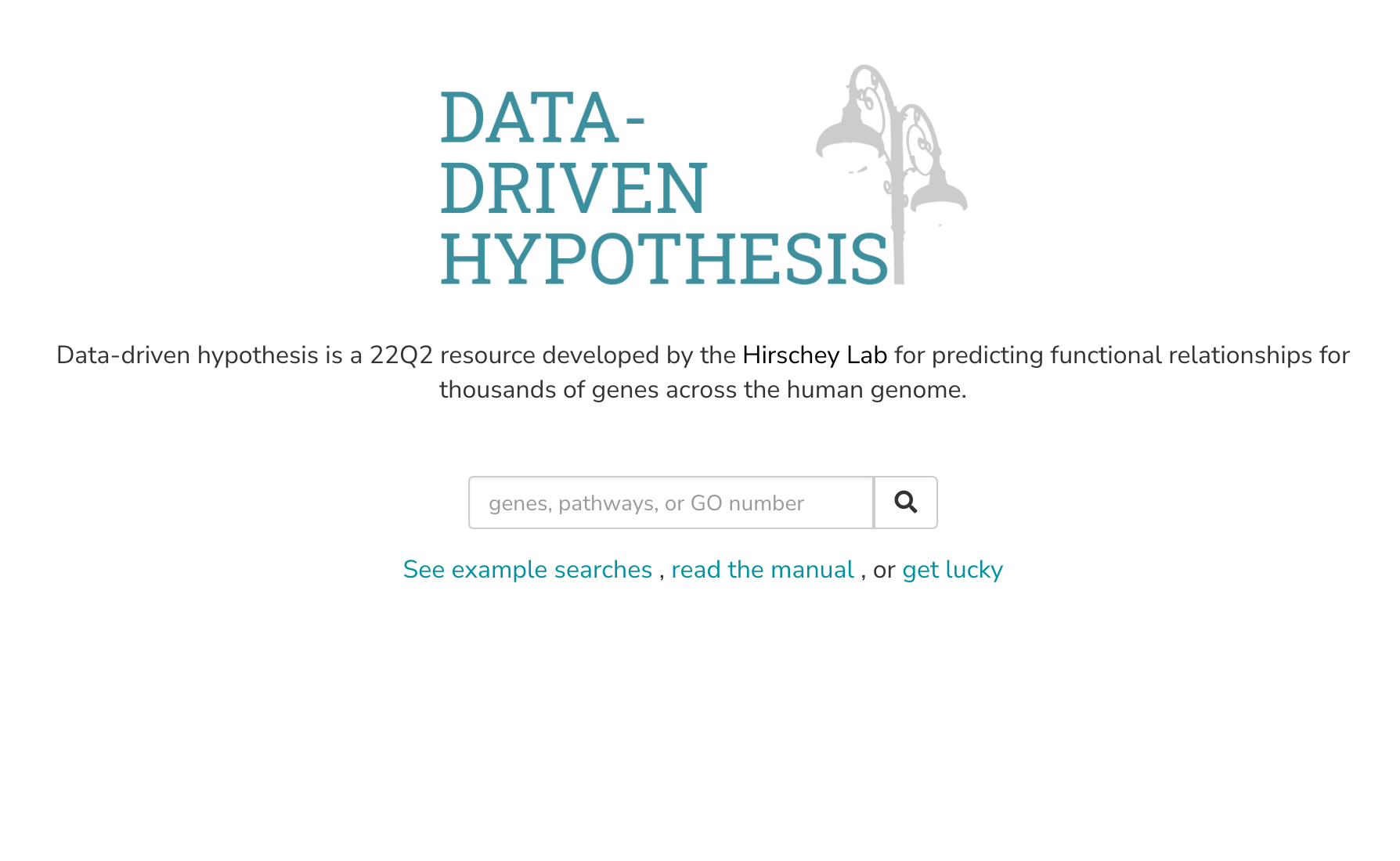Start Here

“If you didn’t know what your gene does, what’s the first experiment you would do?”
google it.
the future of search is niche
The data-driven hypothesis project
Search
Gene Search
The easiest way to start is to type a gene (or protein) symbol into the search box. Typing a single gene Into the search panel will then look up this chain against genes and proteins. It will return a list of best matches, which can then be selected for further query. Beyond a single gene, this application can handle pathways or multi gene queries. To search a pathway, type the pathway name into the search just as you would a gene inquiry. If you have a specific GO number for the pathway, you can also type this in. Lastly, you can simply type in a custom set of genes that you want to query.
Cell Line Search
Similar to a gene query, you can also search for a cell line of interest. Approximately 1000 cell lines are included in this resource. Simply type the name of a single cell line and the app will return a list of best matches. Additionally, users can search for a cell lineage or linear subtype, which is a collection of defined cells. Finally, a custom set of cells can also be queried.
Compound Search
A compound search consists of either a drug or metabolite. This unique search type will return information about the compound. Furthermore, it will return information about the genes that are known to handle the metabolite, or are targeted by the compound. Like the other search types, defined lists of compounds can be queried for a metabolic pathway, or a common mechanism of action for drugs. Lastly a custom set of drugs or metabolites can be queried.
Example Searches
Search for genes
- A single gene, such as TP53 or BRCA1
- A pathway name, such as cholesterol, which will lead you to Cholesterol Biosynthetic Process
- The Gene Ontology biological process identifier, such as 1901989, which will find Pathway: Positive Regulation Of Cell Cycle Phase Transition (GO:1901989)
- A custom list of genes (separated by commas), such as BRCA1, BRCA2, which will search a custom gene list
Read the manual
This manual serves as a guide to queries, and provides deeper context and more robust statistical descriptions of data analysis workflows. This manual can be navigated like the website, focusing on a specific type of query, and then exploring the pre-computed analyses presented to the user.
Get Lucky
In an homage to Google’s infamous “I’m feeling lucky” button on their homepage, we provide a similar button to randomly pull a gene from a defined list and serve it to the user.
The list of genes was chosen based on strong dependency scores, co-essentiality with known genes, and co-essentiality with unknown genes. The known and unknown genes were defined by calculating the co-publication count of each pair of genes for all genes, and then normalizing a co-publication score for a single gene query. To be included in the ‘surprise me’ list, the gene needed to have at least one gene with greater than 0.9 relative co-publication score (serving as a positive control) and one gene with less than 0.1 relative co-publication score. In this way, new associations might be found by clicking “get lucky”